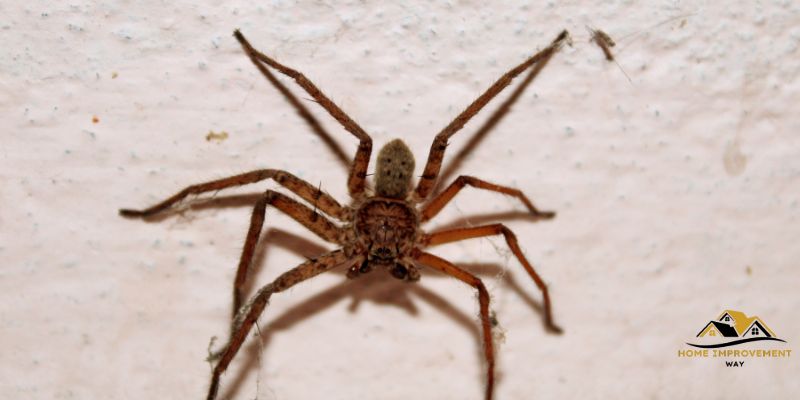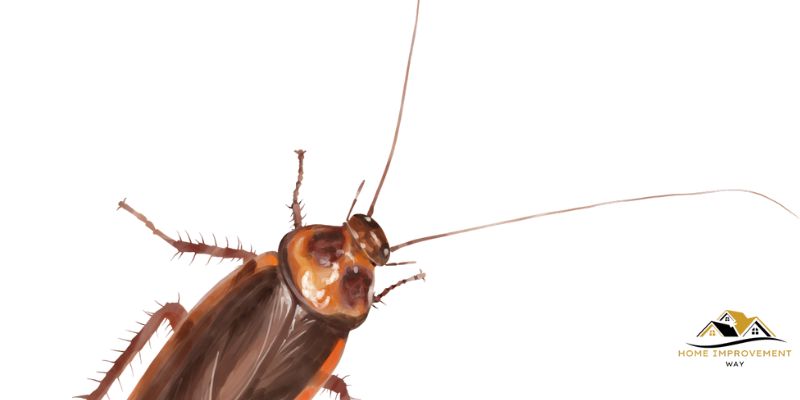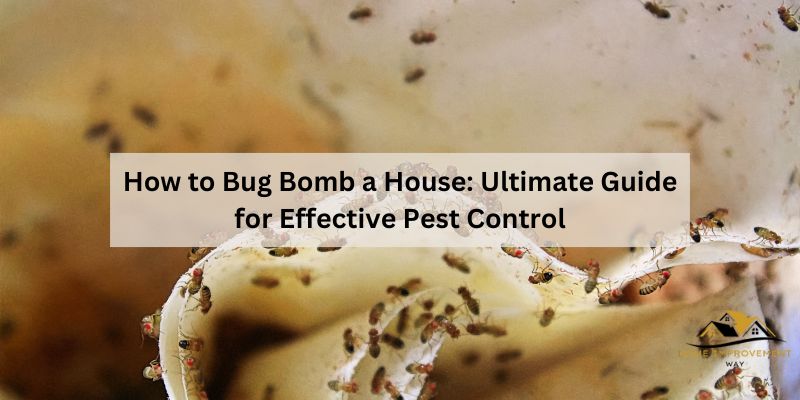To bug bomb a house, follow these steps: 1. Clear the area of all people and pets.
2. Seal off food and utensils in airtight containers. A common problem for homeowners is dealing with household pests like roaches, ants, spiders, or fleas. These unwanted guests can not only be a nuisance but also pose health risks. In such instances, bug bombing, also known as pest fogging or fumigation, can be an effective solution.
Bug bombing involves using a specialized aerosol insecticide to target and eliminate pests in an entire space, such as a house. However, it’s crucial to approach this process carefully and adhere to safety guidelines to protect yourself, other occupants, and valuable belongings. We will outline the steps to safely bug bomb a house and get rid of the pest problem efficiently. So, let’s dive into the details without further delay.
The Importance Of Pest Control
Pest control is crucial for maintaining a healthy and comfortable home. Learn how to effectively bug bomb a house and eliminate unwanted pests for good.
Protecting Your Home
Pest control plays a vital role in safeguarding your home from unwanted intruders. Whether it’s termites, rodents, or
insects, pests can cause significant damage to your property if left unchecked. By investing in effective pest control measures, you can ensure that your home remains a safe and comfortable haven for you and your loved ones.
Protecting your home from pest infestations helps preserve its structural integrity, preventing costly repairs and extermination procedures down the line. By taking proactive measures to control and eliminate pests, you gain peace of mind and maintain the value of your property.
Health And Safety Risks
Pest infestations not only cause damage to your home but also pose considerable health and safety risks for you and your family. Pests can spread diseases, contaminate food, and trigger allergic reactions. Some pests even carry parasites or transmit harmful bacteria, which can lead to serious health problems.
- Pests like rats and mice leave droppings and urine that can contaminate surfaces and food, potentially exposing you to diseases such as Salmonella and Hantavirus.
- Insects like mosquitoes and ticks can transmit dangerous diseases like West Nile virus, Lyme disease, and Zika virus.
- Cockroaches, with their allergens and feces, can trigger asthma attacks and allergic reactions.
By proactively managing pests and implementing effective pest control methods, you reduce the risk of these health hazards and create a healthier living environment for you and your family.
Additionally, many pest control products available in the market can be harmful if not used correctly. That’s why it’s crucial to follow the instructions provided by professionals when using pest control methods such as bug bombs. Proper application and precautions ensure that you and your family remain safe during the pest eradication process.

Understanding Bug Bombing
Bug bombing is an effective method for eliminating pests from your house. By following proper steps, you can safely and successfully bug bomb your home, ensuring a bug-free environment.
Bug bombing, also known as total release fogging, is a popular method used to eliminate pests in a house. It involves the use of bug bombs, which are aerosol cans that release insecticides into the air. This section will provide a comprehensive understanding of bug bombing, including what it is, how it works, and the different types of bug bombs available.
What Is Bug Bombing?
Bug bombing is a pest control method that involves filling an enclosed space, such as a room or an entire house, with insecticide aerosol to eliminate pests. It is commonly used to combat stubborn infestations of insects such as cockroaches, fleas, ants, and spiders. The bug bombs, also known as foggers, release a fine mist of insecticide that penetrates cracks and crevices, reaching pests in hard-to-reach areas.
How Does It Work?
Bug bombs work by utilizing the active ingredients in the insecticide to kill pests in the treated area. These insecticides typically contain chemicals that target the nervous system of the pests, disrupting their normal functioning and leading to paralysis or death. When the bug bomb is activated, it releases a cloud of insecticide that disperses throughout the space, effectively reaching pests hiding in different parts of the room or house.
Types of Bug Bombs
There are different types of bug bombs available in the market, each designed to target specific types of pests or offer different features. Here are some commonly used bug bombs:
1. Multi-Insect Bug Bombs: These bug bombs are formulated to target a wide range of pests, making them a versatile option for general pest control. They are effective against various insects, including cockroaches, spiders, ants, fleas, silverfish, and more.
2. Flea Bombs: Specifically formulated to combat flea infestations, flea bombs release insecticides that effectively target fleas at different stages of their lifecycle. This makes them an ideal choice for eliminating fleas from your home.
3. Bed Bug Foggers: Bed bug foggers are designed specifically for tackling bed bug infestations. These bug bombs contain insecticides that effectively treat mattresses, furniture, and other areas where bed bugs may hide.
4. Odorless Bug Bombs: Odorless bug bombs are a popular choice for those who are sensitive to the strong odor that insecticides may emit. These bug bombs provide the same level of efficacy as regular bug bombs but without the unpleasant smell.
When using bug bombs, it’s crucial to follow the instructions provided by the manufacturer. Proper preparation, evacuation of humans and pets, and post-treatment ventilation are essential steps to ensure effective pest control and the safety of all occupants.
In summary, bug bombing is a pest control method that involves using bug bombs to release insecticides into the air, eliminating pests in an enclosed space. Understanding how bug bombing works and the different types of bug bombs available can help you choose the most suitable option for your pest control needs.
Preparing Your House For Bug Bombing
Bug bomb, also known as insect fogger, is an effective way to eradicate pests from your house. However, before you start bug bombing, it is crucial to prepare your house properly to ensure the best results. In this section, we will guide you through the essential steps for preparing your house for bug bombing.
Identifying The Pest
Before bug bombing your house, it is essential to correctly identify the pest you are dealing with. Different pests may require different bug bomb products or treatment methods. Take the time to observe the signs of infestation, such as droppings or damage, to determine the exact pest species.
Removing Clutter And Food Sources
Pests are often attracted to clutter and accessible food sources. To maximize the effectiveness of bug bombing, it is crucial to remove any clutter and eliminate potential food sources that may attract pests. Start by decluttering all areas of your house, including closets, shelves, and beneath furniture. Dispose of any unnecessary items or organizing them neatly to minimize hiding places for pests.
Tip: Store all food items securely in airtight containers and place them in cabinets or the refrigerator to prevent pests from invading your food supplies.
Protecting Valuables
During bug bombing, it is important to protect your valuable items from any potential damage caused by the chemicals. Remove and store delicate or valuable items, such as artwork, electronics, or heirlooms, in a safe and sealed place. You can use plastic covers or sheets to shield larger items that cannot be moved.
Important: Remember to cover or remove any sensitive items, such as fish tanks or pet cages, and ensure that all windows and doors are closed tightly for better containment of the bug bomb.
Executing The Bug Bombing Process
Bug bomb, also known as a total release fogger, is an effective solution for eliminating pesky insects and bugs from your house. When it comes to executing the bug bombing process, there are a few important steps you need to follow. In this section, we will discuss these steps in detail to help you bug bomb your house successfully.
Choosing The Right Bug Bomb
Before you begin the bug bombing process, it’s crucial to choose the right bug bomb that is suitable for your specific bug problem. Not all bug bombs are created equal, so it’s essential to read the labels and instructions carefully. Look for bug bombs that are specifically formulated for the type of insects you are dealing with, whether it’s roaches, flies, or mosquitoes.
When selecting a bug bomb, consider the size of your room or area you want to treat. Bug bombs come in different sizes, each designed to cover a specific square footage. Make sure you choose a bug bomb that matches the size of the space you want to fog. This will ensure that the bug bomb is effective in eradicating the bugs.
Covering Or Removing Exposed Items
Prior to bug bombing your house, it’s important to cover or remove any exposed items and surfaces that could get contaminated by the bug bomb residue. This includes food items, utensils, dishes, and personal belongings. Place them in sealed containers or cover them with plastic sheets to protect them from the chemicals released during the bug bombing process.
Additionally, remove any pets, fish tanks, or sensitive plants from the area. Bug bombs can be harmful to animals and plants, so it’s best to relocate them to a safe location until the bug bombing process is complete.
Properly Sealing The Space
Another critical step in bug bombing a house is properly sealing the space to ensure the bug bomb is contained and maximizes its effectiveness. Start by closing all windows, doors, and vents. Seal any cracks or openings in the room with tape or caulk to prevent the bug bomb from escaping.
If you have multiple rooms or areas to bug bomb, ensure that they are well-sealed from one another. It’s crucial to prevent the bugs from escaping or moving to other areas of your house.
Once the space is adequately sealed, it’s time to activate the bug bomb. Follow the instructions on the bug bomb canister carefully, as each brand may have slightly different activation methods. Generally, you will need to place the bug bomb on an elevated surface, set it to release, and leave the room immediately.
Remember to set a timer so you can re-enter the treated area after the recommended exposure time. Make sure to open windows and doors to ventilate the space and allow any remaining chemicals to dissipate before returning.
Executing the bug bombing process requires careful consideration and attention to detail. By choosing the right bug bomb, covering or removing exposed items, and properly sealing the space, you can effectively rid your house of unwanted pests and enjoy a bug-free environment.

Safe And Effective Post-bombing Procedures
After successfully bug bombing your house to rid it of pesky insects, it’s crucial to follow safe and effective post-bombing procedures. These procedures will help you ensure that your living environment is safe for your family and pets, while also preventing future infestations. In this section, we will outline the step-by-step instructions for proper ventilation and aeration, cleaning up, and preventing future infestations.
Ventilation And Aeration
Ventilation and aeration are critical steps to take after using a bug bomb in your house. When the fogging process is complete, you’ll need to allow fresh air to circulate and remove any residual chemicals from the air. It is advised to keep the windows and doors open for a few hours to facilitate this process. If possible, turning on fans or ventilation systems can help expedite the aeration process.
Cleaning Up
Cleaning up after bug bombing is essential to ensure a safe and hygienic living environment. Start by wearing gloves and using a damp cloth or disposable wipes to wipe down all surfaces including countertops, tables, floors, and furniture. Pay extra attention to areas that are commonly used or touched, such as doorknobs, light switches, and remote controls. Thoroughly vacuum the carpets, rugs, and upholstery to eliminate any dead insects or chemical residues.
In case you find any visible residue on your belongings, it is advisable to wash them separately using detergent and warm water. Be cautious while handling the treated items, and avoid direct skin contact whenever possible. Remember to dispose of any used cleaning materials and empty bug bomb canisters properly.
Preventing Future Infestations
While bug bombing can provide temporary relief from pests, it’s crucial to take preventative measures to avoid future infestations. Here are some simple yet effective tips:
- Seal all entry points: Inspect and seal any cracks, gaps, or openings that pests can use to enter your house. Caulk or weatherstrip doors and windows to create a barrier against insects.
- Maintain cleanliness: Regularly clean your house, paying special attention to areas where pests are commonly found, such as kitchens, bathrooms, and basements. This will help eliminate potential food and water sources, making your house less inviting for bugs.
- Remove clutter: Clutter provides pests with hiding spots and breeding grounds. Regularly declutter your house and remove any unnecessary items that may attract insects.
- Store food properly: Keep all food items tightly sealed in containers to prevent them from becoming attractive targets for pests.
- Maintain your yard: Trim vegetation and trees near your house and keep the yard well-maintained to discourage pests from taking refuge outside and eventually making their way inside.
By following these post-bombing procedures and taking preventive measures, you can maintain a bug-free home environment and ensure the safety and well-being of your family and pets.
Conclusion
Successfully bug bombing a house requires careful planning, proper execution, and an understanding of the potential risks involved. By following the steps outlined in this guide, you can effectively eliminate pests from your home and create a safer and more comfortable living environment for you and your family.
Remember to always read and follow the instructions provided by the bug bomb manufacturer, and consider seeking professional assistance if needed. Keep your home pest-free and enjoy peace of mind knowing that you have taken the necessary steps to address this common household issue.


